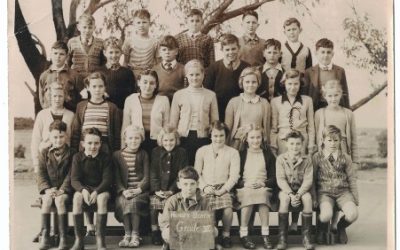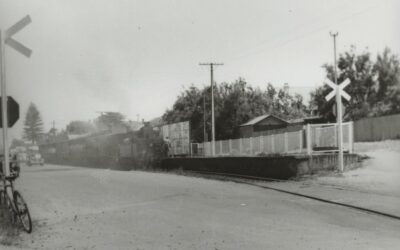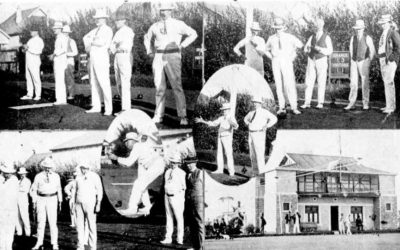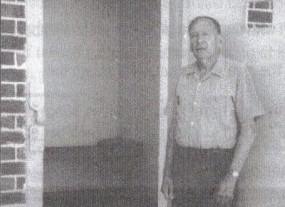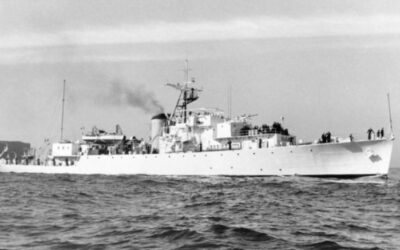Stories from Henley and Grange
Henley Beach Primary School in the 1940s
(The following stories form an abridged version of an article written by Phillip Allen and published in the H&GHS Journal 44, November 2023)...
The Grange Railway Station
In the 1880s a railway line was built between the townships of Woodville and Grange, influencing the growth and development of the Henley and Grange...
Grange & Henley Beach Bowling Club 1906-1923
A meeting to discuss forming the Grange and Henley Beach Bowling Club was held at the Grange Institute on the 12th May, 1906 at which Alderman King...
Henley and Grange – a history note
From the early days of white settlement in South Australia, the district west of Adelaide attracted colonists who farmed on the rich alluvial soils deposited by regular flooding of the River Torrens and various creeks. The development of the region nearer the coast, geographically isolated by low-lying swampy land with large areas of sand and reedbeds, was curtailed until the 1870s when the first roads were built.
The townships of Henley Beach and Grange were developed from 1877 as a speculative venture by a group of investors led by Frederick Estcourt Bucknall and Arthur Harvey. Henley was named after Henley-on-Thames in England and Grange recognized ‘The Grange’, the name given by Captain Charles Sturt to the cottage he built in the locality in 1841. The Grange Land & Investment Company (later Grange Railway & Investment Company) was formed in 1878 during which year work began to develop Grange as a seaside resort. Hundreds of allotments were offered for sale in the townships but development was slow and it was not until public transport, albeit erratic in nature, was secured in 1882-83 that the two townships progressed. A horse tram service from Adelaide to Henley started in late 1882 and was extended to Grange a few months later. Also in 1882, a narrow gauge railway connecting Grange with Woodville was opened and eight (of a planned 20) luxury terrace houses – the Marine Residences – were completed at Grange where the company also built the jetty and a hotel. At Henley, construction of the jetty was funded partially by public subscription.
In 1883, with Adelaide at the peak of a boom, Henley had 24 houses occupied by 134 persons and Grange had 30 houses and at least one shop. In the next few years the efforts of residents and speculators ensured that these ‘isolated village’ townships thrived and became popular seaside resorts for sailing regattas, sports days on the beaches, sea bathing and promenading on the jetties. Further impetus occurred when the railway from Woodville, which had been taken over by the Government in 1886, was extended to Henley in 1894 and the tram service was electrified in 1909. Although a viaduct now carried the tramway across a flood-prone area at Henley, regular winter floods still caused havoc to rail and tram services. It was not until 1937, when the River Torrens outlet at Henley South was completed, that the problem of flooding was overcome. Rapid housing development throughout the region followed after World War II, fuelled in part by the more ready availability of motor transport.
Today, the popular seaside suburbs of Henley and Grange have largely fulfilled the aims and prophecies of their founding fathers. In spite of the passage of the years, a significant portion of the early streetscape remains and thus some of the ‘village atmosphere’ of the original townships is still discernible.
Alan Leonard Remembers
Alan Leonard has many interesting memories to share … here are four about police cells, phonograms, early entertainment and snakes
An Extended Stay
On Sunday, 11th April, 1948, Adelaide awoke to hurricane winds, unprecedented in the history of the state. Winds gusting to 80 mph (130 lans) lashed...
Taming the Torrens: From Floodplain to Outlet
For much of its history, Henley and Grange east of the sandhills was a natural floodplain. Water from the Adelaide Hills flowed down the Torrens...
Henley South Kiosk
Narrated by Quenten Iskov Do you remember what Saltpetre is? From the 1930s until the late 1970s, a kiosk operated on the beach in front of the...
Henley Beach Hotel
The Henley Hotel was erected in 1878 by Mr J. Stewart of Port Adelaide at which time it was believed that the Henley Jetty would be constructed...
Ozone Tea Rooms
When the Henley Hotel was owned by the Whallins they built the elegantly designed Ozone Tearooms next door in 1912, where the bottle shop now...
Banner photo: Henley Beach January 1948, Courtesy of th History Trust of South Australia [public domain]
